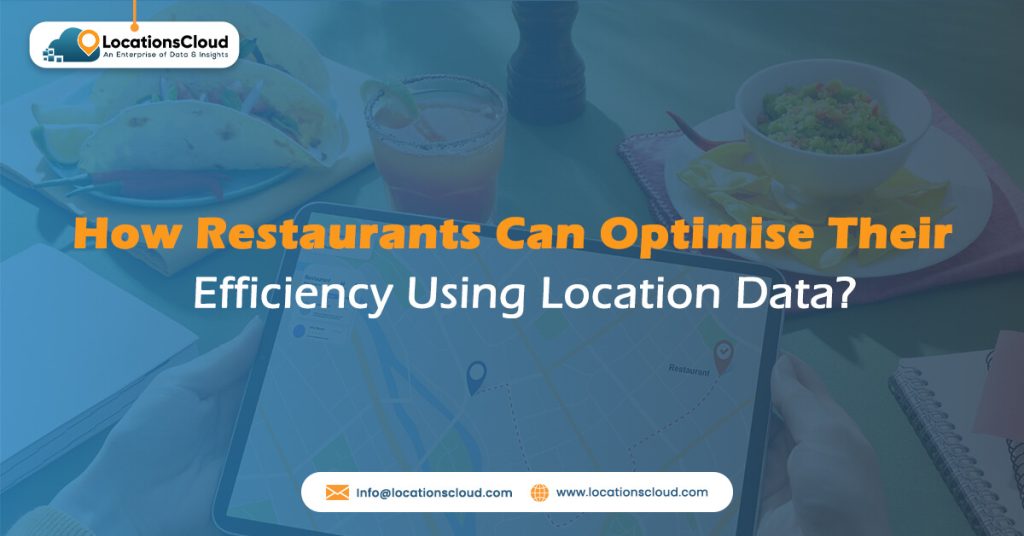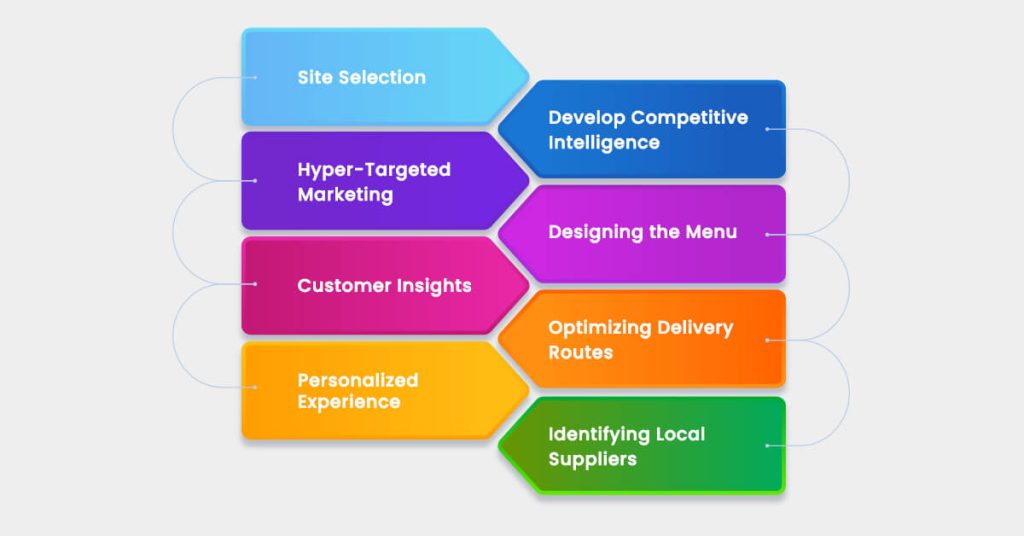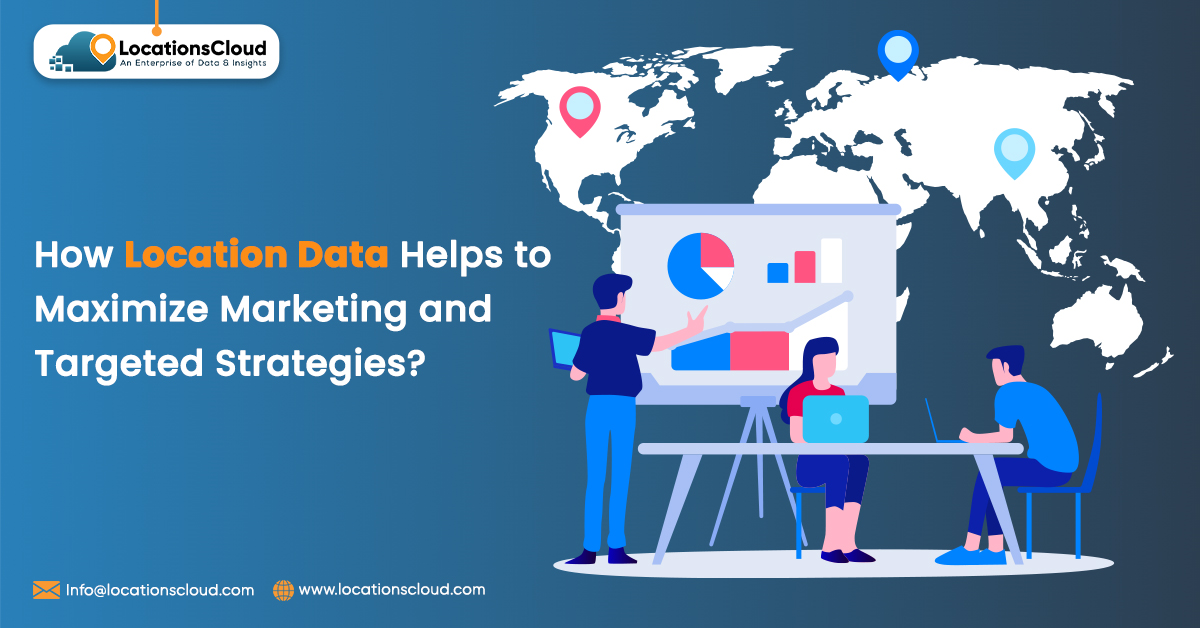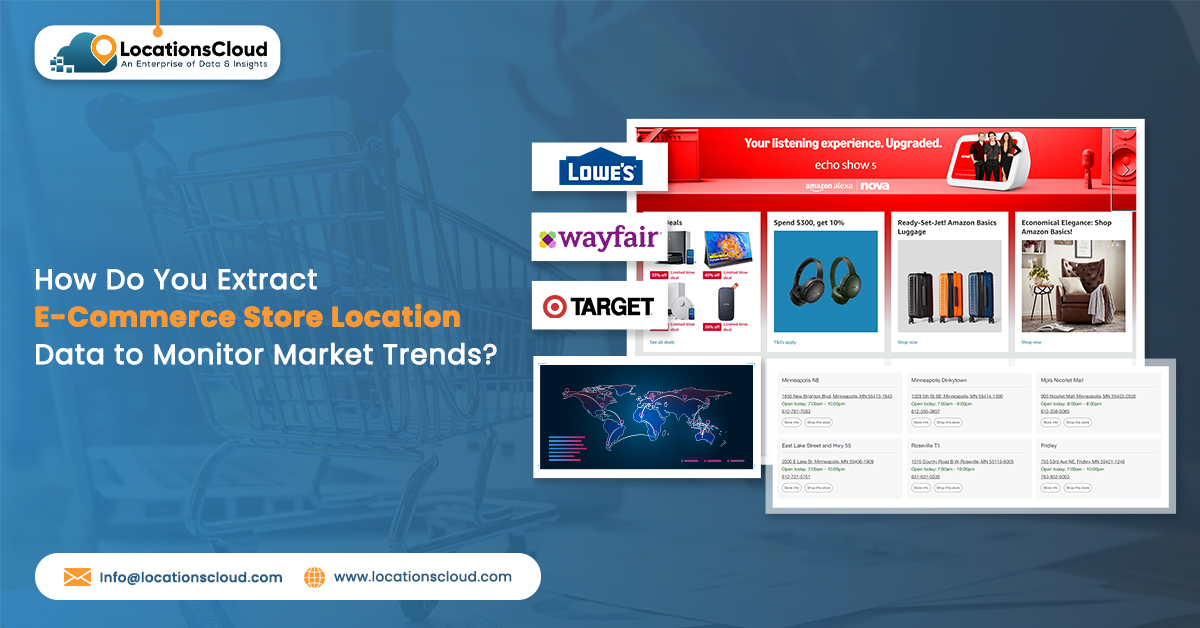
Every second on the clock in the fast-paced restaurant world translates to customer satisfaction. Harnessing location data is the restaurateur’s secret ingredient to improve efficiency. Imagine a world where tables turn faster, deliveries fly out the door precisely, and every meal meets its patron at the peak of freshness; this is the power of location intelligence. Keep your business from getting left behind; it’s time to map out success. Join us as we walk you through how location data can help your restaurant run smoother and redefine the customer experience.
What is Location Data?
Location data refers to the geographical position of objects, places, or people globally. This information is collected by GPS (Global Positioning System), Wi-Fi, cell towers, or other tracking systems. It can include coordinates (latitude and longitude), street addresses, or place names.
In business and marketing, knowing where their customers are is useful. Location data is valuable for understanding customer behaviors, preferences, and patterns. With this, businesses can make informed choices, like where to advertise or how to get their products to people faster and easier.
How Restaurants Can Use Location Data to Improve Efficiency?
Location data is beneficial because it lets restaurants of all sizes make informed choices, work more smoothly, and stay profitable. Here are 10 ways how restaurants can use location data to improve efficiency.

Site Selection
Picking the perfect spot for a restaurant can be quite a puzzle! However, location data can guide you towards a prime location. It points you to areas bustling with people and within a stone’s throw of prospective diners, saving precious time and funds otherwise spent on extensive advertising. It helps you avoid places with few customers to pinpoint the perfect spot with high foot traffic and fewer competitors, ensuring your tables are full and your kitchen is humming. This valuable data helps you find the best place for your restaurant.
Develop Competitive Intelligence
Location data provides valuable insights into your competitors’ business, such as their level of activity, delivery areas, and peak hours. This information can enhance your menu, ensure sufficient staff during busy times, and promote your restaurant in areas where competitors may not be present. By leveraging location data effectively, you can outperform your competitors and attract more customers to your restaurant. It helps your restaurant operate seamlessly, produce dishes people crave, maintain a steady flow of customers, and ultimately achieve greater success.
Hyper-Targeted Marketing
Location data helps restaurants show their ads to people based on who they are, their choices, and what they like. By knowing where the customers are from, their favorite foods, and their dietary information, restaurants can create better ads for the right people at the right time. Showing ads to people at places like restaurants, special events, or nearby restaurants can make the business more seen and sell more. For example, telling people about lunch deals near workplaces, weekend brunch options for families, healthy food options near gyms, or hot chocolate on cold days can connect you with the right customers. Using location data can also help businesses reach different groups of people, improving their ads and keeping customers happy.
Designing the Menu
Location data helps restaurants understand the local tastes and preferences, creating menus that resonate with the nearby community. For instance, if a restaurant is in a coastal area, the data might show a high demand for seafood, prompting the addition of more fish dishes. Location data can reveal health trends, such as organic or vegan options in specific neighborhoods, guiding the restaurant to offer these choices. The menu can also highlight seasonal ingredients popular in the area, appealing to local food customs and sustainability concerns. By analyzing these insights, restaurants can create a menu that attracts regional customers and supports local suppliers.
Customer Insights
Location data helps restaurants understand their customers better to stay ahead in the business and make money. By looking at where customers go and when they eat out, restaurants can figure out the best places and times to be open and what kinds of food different groups like. With this information, restaurants can change their hours, create special menus, and create suitable ads matching customers’ wants.
Also, when a restaurant knows a customer’s favorite dishes, how often they eat out, and how much they spend, it can offer them special deals or points to keep them coming back. Basically, location data gives restaurants the details they need to ensure they offer the best service, sweet deals, and the right kind of attention to their customers.
Optimizing Delivery Routes
Location data can help restaurants deliver food faster and more efficiently. By analyzing this data, restaurants can find the places that order food most often and the fastest ways to get there. This assists drivers in avoiding traffic and blocked roads, helping them plan their routes better, deliver food quickly, and complete more orders. Also, by knowing the busiest times and delivery places, restaurants can ensure they have enough drivers when and where they are needed most. This helps keep customers happy, so they order more, and the restaurant makes more money.
Personalized Experience
Location data helps restaurants make each customer’s visit memorable, making them happy and more likely to return. With this data, restaurants can determine what people in different places or events like to eat. Then, they can suggest popular dishes, give special deals, or set up the restaurant to match what’s popular locally. If someone eats at the restaurant a lot, the data might show what they usually order or when they like to eat. So, the restaurant can save a table just for them or give them a special offer on their favourite dish. This kind of personal attention makes customers feel important. Lastly, if a restaurant wants to open more locations, location data can tell them where they have a lot of fans already, so the new restaurant is more likely to do well.
Identifying Local Suppliers
Location data helps restaurants find nearby farms, dairies, breweries, and other food suppliers. By seeing who is close to them on a map, restaurants can choose the best local suppliers based on how close they are, how easy it is to get deliveries from them, and how good their reputation is. Using local products can make the food fresher and help the neighborhood economy, and the restaurant might also have a unique feature that it is well-known for, such as serving ‘farm-to-table’ food. Plus, location data shows what special fruits or vegetables are available during different seasons in the area so restaurants can offer unique dishes. By using ingredients from the locals, restaurants can offer meals made with local ingredients.
Conclusion
As we live in a world that’s becoming more digital, smart use of location data is becoming vital. The power of location data for driving efficiency in the restaurant industry should not be underestimated. It can make deliveries faster, help tailor customer experiences, find local food suppliers, and decide the best places for new restaurants. By using all the information that location data can give, restaurants can improve in many ways. They can get loyal customers, work more efficiently, be eco-friendly, and make more money. The need for location data is shifting from a luxury to a necessity for every restaurant wishing to thrive in a competitive market.
LocationsCloud is an enterprise of Data & Insights which helps you find the right spot for your business. We offer accurate, up-to-date, ready-to-use location data that transforms your business operations and marketing strategies.




